 November 5, 2020 John E. Ross, KD8IDJ, Editor
| ||||||
ARRL Comments on FCC Draft WRC-23 Recommendations ARRL has submitted comments on two draft recommendations approved in October by the FCC's World Radiocommunication Conference Advisory Committee (WAC). The comments focus on draft recommendations for World Radiocommunication Conference 2023 (WRC-23) Agenda Item (AI) 1.2. AI 1.2 will consider the identification of frequencies in the 3.3 - 3.4 GHz and 10.0 - 10.5 GHz bands, among others, "for International Mobile Telecommunications (IMT), including possible additional allocations to the mobile service on a primary basis," in accordance with WRC-19 Resolution 245. ARRL urged no change to the 3.3 - 3.4 GHz international secondary allocation to the Amateur Service in ITU Regions 2 (the Americas) and
3 (Oceania), and no change to the 10.0 - 10.5 GHz worldwide secondary amateur and amateur-satellite allocation. "Radio amateurs make substantial use of both bands," ARRL said in its comments. "They have conducted experiments and designed systems that protect primary users. The lack of interference complaints is evidence that they have been successful in doing so. In this manner, new spectrum horizons are explored and new techniques are developed that put spectrum to productive use that otherwise would represent lost opportunities and waste of the natural resource." ARRL stressed that the WAC preliminary views make no suggestion that the international secondary allocations to the Amateur Service should not continue in both bands. ARRL said it wanted to reaffirm that these secondary allocations continue to be important and useful and that WRC-23 should not consider changing either secondary allocation. "Sharing between primary users and secondary amateur radio users has been highly successful, and the US domestic Table reflected the International allocations until this year," ARRL said. In September, however, the FCC adopted an Order to delete the secondary amateur and amateur-satellite allocations in the 3.3 - 3.5 GHz band. Amateur radio operations may continue on a secondary basis, subject to decisions to be made on issues raised in a Further Notice of Proposed Rulemaking in the proceeding, WT Docket 19-348. ARRL maintained that amateur radio should remain secondary in the international allocations at 3.3 - 3.4 GHz "until more is known about the technical characteristics of equipment that will be used by new services and the extent of geographic build-out." With regard to 10.0 - 10.5 GHz, ARRL noted that it has been used for many amateur terrestrial experiments and tests that have helped to develop the technical characteristics of the band. The band is also heavily used throughout much of the world as the downlink for the Qatari amateur satellite Es'hail-2 (QO-100). ARRL noted that radio amateurs utilizing the secondary spectrum at 3.3 - 3.4 GHz and 10.0 - 10.5 GHz "have developed and honed their equipment and capabilities to share with the existing services." "The Amateur Service has earned its reputation for making careful and non-preclusive use of its secondary allocations and will continue doing so," ARRL concluded. "Therefore, we respectfully request that the Amateur Service and Amateur-Satellite Service be continued as secondary services in the above bands." ARRL Pacific Division Director Jim Tiemstra, K6JAT, SK ARRL Pacific Division Director Jim Tiemstra, K6JAT, of Oakland, California, died October 30. An ARRL Life Member, he was 65. Tiemstra was ARRL Pacific Division Vice Director from 2009 through 2017, sitting on the Administration and Finance, and Programs and Services Committees of the Board. He became ARRL Pacific Division Director in January 2018. He was a member of the Administration and Finance Committee, the Legal Structure Review Committee, chair of Licensed in 1970 as WN9ELU in Chicago, Tiemstra was the president of his high school radio club in Illinois. Early on, he built most of his own gear from Heathkits. In 1977, he married Lilah Greene, KE6EHD, and they moved to California, where Tiemstra became N6OIK, later choosing K6JAT as a vanity call sign. He'd also held V26JAT and 3D2TJ and had operated from Curacao and Hawaii. Primarily a contester and DXer, Tiemstra had been a DXpedition member and had long been involved in the public service aspects of the hobby. As a member of the Oakland Amateur Radio Emergency Service (ARES) group, he was among those responding to the Loma Prieta earthquake in 1989 and the Oakland Hills firestorm in 1991, receiving a Certificate of Appreciation from the American Red Cross. He championed the Emergency Communication Ham Operation (ECHO) proposal to install amateur radio equipment in his city's Emergency Operations Center and in each of its 30 fire stations. Tiemstra worked with his ARES group to gain RACES recognition, wrote the RACES Operations Manual, and was instrumental in forging a formal Letter of Understanding with the City of Oakland. He served as Oakland's RACES Radio Officer for more than 14 years, was on the mayor's Emergency Management Council, and was ARRL East Bay Section Emergency Coordinator. In 2002, he was recognized by the Oakland Fire Department as Community Volunteer of the Year. Tiemstra retired in 2018 as a federal practitioner in the private practice of law. Read more. New NIST System Detects Ultra-Faint Signals Using Quantum Physics Principles Researchers at the National Institute of Standards and Technology (NIST) have devised and demonstrated a system that could dramatically increase the performance of communication networks while enabling record-low error rates in detecting even the faintest of signals. This has the potential to cut the total amount of energy required for state-of-the-art networks by a factor of 10 to 100. The proof-of-principle system consists of a novel receiver and corresponding signal-processing technique, entirely based on the
properties of quantum physics and able to handle extremely weak signals with pulses that carry many bits of data. "We built the communication test bed using off-the-shelf components to demonstrate that quantum-measurement-enabled communication can potentially be scaled up for widespread commercial use," said Ivan Burenkov, a physicist at the Joint Quantum Institute, a research partnership between NIST and the University of Maryland. Burenkov and his colleagues reported the results in Physical Review X Quantum. "Our effort shows that quantum measurements offer valuable, heretofore unforeseen advantages for telecommunications leading to revolutionary improvements in channel bandwidth and energy efficiency," Burenkov added. Modern communications systems work by converting information into a laser-generated stream of digital light pulses in which information is encoded -- in the form of changes to the properties of the light waves -- for transfer and then decoded when it reaches the receiver. The train of pulses grows fainter as it travels along transmission channels, and conventional electronic technology for receiving and decoding data has reached the limit of its ability to precisely detect the information in such attenuated signals. The signal pulse can dwindle until it is as weak as a few photons -- or even less than one on average. At that point, inevitable random quantum fluctuations, called "shot noise," make accurate reception impossible by normal ("classical," as opposed to quantum) technology because the uncertainty caused by the noise makes up such a large part of the diminished signal. As a result, existing systems must The NIST team's system can eliminate the need for amplifiers because it can reliably process even extremely feeble signal pulses: "The total energy required to transmit one bit becomes a fundamental factor hindering the development of networks," said Sergey Polyakov, senior scientist on the NIST team. "The goal is to reduce the sum of energy required by lasers, amplifiers, detectors, and support equipment to reliably transmit information over longer distances." ARRL Podcasts Schedule
The latest edition of Eclectic Tech (Episode 20) features an interview with ARRL Emergency The On the Air and Eclectic Tech podcasts are sponsored by Icom. Both podcasts are available on iTunes (iOS) and Stitcher (Android), as well as on Blubrry -- On the Air | Eclectic Tech. A Sweepstakes "Clean Sweep" Means Working 84 Sections This Year The ever-popular ARRL November Sweepstakes (SS) weekends are upon us -- one for CW and the other for SSB. This year, participants will have to search out an additional Section. The CW event takes place November 7 - 9 (UTC), and the SSB event is from November 21 - 23 (UTC). Each Sweepstakes leg begins at 2100 UTC on Saturday and runs through 0259 UTC on Monday. Stations may operate 24 of the available 30 hours. An SS Operating Guide package, available via the SS web page, explains how to participate in Sweepstakes. Clubs or public service teams that are considering participating in SS will find
the guide to be a useful source for information. This year marks the 79th SS event, which attracts more than 3,000 entries each fall for both weekends. The number of ARRL and Radio Amateurs of Canada (RAC) Sections rose to 84 earlier this year with the addition of Prince Edward Island (PE) as a separate entity. The objective of SS -- or "sweeps" -- is to work as many stations in as many of the 84 Sections as possible within 24 hours of operating. The number of Sections worked is a score multiplier, and working all of them -- a "clean sweep" in SS terminology -- is the goal of many SS aficionados, who qualify for a clean sweep coffee mug. Hardcore SS operators try to run up the contact and multiplier counts by operating for the allowed 24 hours. Some multipliers are rarer and/or harder to work, and these can vary from year to year. For many years, the most difficult SS multiplier was considered to be Northern Territories (NT) in Canada, where J. Allen, VY1JA, in Yukon Territory, was often the only station available. Allen has stepped back from amateur radio, however, owing to health issues. Making a clean sweep also requires working Alaska and Hawaii (or another station in the Pacific Section), as well as Newfoundland/Labrador (NL) and Prince Edward Island (PE) in the other direction. On the rarer side, finding -- and working -- stations in Alberta (AB), North Dakota (ND), Northern New York (NNY), US Virgin Islands (VI), Wyoming (WY), and Delaware (DE) has proven vexing for some SS operators. Nonetheless, even stations with modest equipment and antennas can enjoy success. Many stations like to operate in the QRP category (with an output of 5 W or less), although that challenge has been more daunting at this point in the solar cycle. ARRL November Sweepstakes is the oldest domestic radiosport event (the first was in 1930). The SS contest exchange has deep roots in message-handling protocol and replicates a radiogram preamble. In SS, stations exchange:
Full contest rules and an Operating Guide that includes examples of log formatting are available on the Sweepstakes web page. The deadline to submit CW entries is November 16. The deadline to submit phone entries is November 30. Direct questions to the ARRL Contest Program. Neutron-1 CubeSat Deployed from ISS; Other Sats Pending The Neutron-1 3U CubeSat was deployed from the International Space Station (ISS) on November 5 at 10:40 UTC. For the satellite's first month and during its commissioning phase, the Neutron-1 beacon will transmit 1,200 bps BPSK telemetry every 60 seconds on 435.300 HSFL operates and maintains a satellite UHF, VHF, and L/S-band amateur radio ground station at Kauai Community College. The primary mission of Neutron-1 is to measure low-energy neutron flux in low-Earth orbit (LEO). The science payload, a small neutron detector developed by Arizona State University, will focus on measurements of low-energy secondary neutrons -- a component of A number of other amateur radio satellites are expected to launch or be deployed in the next few months. AMSAT's RadFxSat-2 (Fox-1E) is expected to go into orbit by year's end on Virgin Orbit's LauncherOne vehicle. RadFxSat-2 carries a 30 kHz wide VU linear transponder. The Tevel Mission -- a series of eight Israeli 1U CubeSats, each carrying a UV FM transponder -- is expected to launch from India on a SpaceX Falcon 9 rocket in December. Also from the Herzliya Science Center is a 3U CubeSat called Tausat-1, which is scheduled to launch on a Japan Aerospace Exploration Agency (JAXA) ISS resupply mission in February for subsequent deployment. Tausat-1 carries an FM transponder. AMSAT-Spain (AMSAT-EA) reports that its PocketQubes, EASAT-2 and HADES, have been integrated for launch on a SpaceX Falcon 9 in December, while GENESIS-L and GENESIS-N have been integrated for launch on Firefly's Alpha rocket. Read more. -- Thanks to AMSAT News Service The K7RA Solar Update Tad Cook, K7RA, Seattle, reports: On November 4, the solar flux density reached 88.1, its highest level since October 14, 2016, when, during a waning solar cycle, it was 92.8, with an average daily flux for that week of 76.9, and average daily sunspot number of 18.7, similar to what we're seeing now.
Spaceweather.com reported on November 3 that the new sunspot group produced a minor solar flare, and a pulse of UV radiation "briefly ionized Earth's upper atmosphere, causing a low-frequency radio blackout over the Indian Ocean." Check the STEREO satellite images: 360° view | Conventional format. A large, new sunspot group, AR2781, is the largest so far in new Solar Cycle 25, according to Spaceweather.com. It should be geo-effective (facing Earth) over the next 10 days. Predicted solar flux is 88 on November 5 - 10; 83 on November 11; dropping to 75, 74, and 75 on November 12 - 14; 76 on November 15 - 21; 75 on November 22 - 27; 74 on November 28 - 29; 72 on November 30 - December 5; 74 on December 6 - 10; 75 on December 11; 76 on December 12 - 18, and 75 on December 19. Predicted planetary A index is 5, 8, and 8 on November 5 - 7; 5 on November 8 - 16; 10, 5, 10; and 15 on November 17 - 20; 12 on November 21 - 22; 8, 10, and 12 on November 23 - 25; 5 on November 26 - 27; 10 on November 28; 5 on November 29 - December 13; then 8, 5, and 8 on December 14 - 16; 12 on December 17, and 10 on December 18 - 19. Sunspot numbers for October 29 - November 4 were 35, 32, 26, 12, 11, 15, and 18, with a mean of 21.3. The 10.7-centimeter flux was 84.6, 79.6, 76.8, 77.3, 81.6, 82.9, and 88.1, with a mean of 81.6. Estimated planetary A indices were 14, 5, 6, 10, 3, 3, and 3, with a mean of 6.3. Middle latitude A index was 11, 4, 6, 8, 2, 2, and 1, with a mean of 4.9. A comprehensive K7RA Solar Update is posted Fridays on the ARRL website. For more information concerning radio propagation, visit the ARRL Technical Information Service, read "What the Numbers Mean...," and check out K9LA's Propagation Page. A propagation bulletin archive is available. For customizable propagation charts, visit the VOACAP Online for Ham Radio website. Share your reports and observations. Just Ahead in Radiosport
ARRL Learning Network Webinars Visit the ARRL Learning Network website (a members-only benefit) to register for upcoming sessions and to view previously recorded sessions. The schedule is subject to change. Amateur Radio's Role at the Boston Marathon Bombing: Steve Schwarm, W3EVE
Tuesday, December 8, 2020, 10 AM PST / 1 PM EST (1800 UTC) Learn and Have Fun with Morse Code: Howard Bernstein, WB2UZE, and Jim Crites, W6JIM Morse code, or "CW," is a popular ham radio operating mode. Learning CW does not have to be an arduous or lonely experience. Learn, practice, and enjoy CW with the methods used by the Long Island CW Club. Thursday, December 17, 2020, 5 PM PST / 8 PM EST (0100 UTC on Friday, December 18) Announcements
IARU Region 2 Executive Committee Meets in Multiple Virtual Sessions The International Amateur Radio Union Region 2 (IARU-R2) Executive Committee (EC) held its fourth meeting of the year via Zoom in three parts, replacing an in-person meeting not possible due to the pandemic. In the first session on October 21, Region 2 President Ramón Santoyo, XE1KK, reviewed the year since the October 2019 Lima General Assembly, highlighting the new initiatives Region 2 has undertaken. These included the appointment of a youth liaison and the introduction of workshops, as well as the work of the Band Planning Committee to coordinate with Regions 1 and 3 on a number of issues, especially the explosive growth in digital modes. Region 2 also took part in a Future Committee, which will develop a strategy and plans for "updating the IARU organization to be more effective in dealing with the challenges of the rapidly evolving telecommunications ecosystem," an IARU Region 2 news release said. Secretary George Gorsline, VE3YV, presented a proposed 2021 strategic plan for discussion. Session 2 on October 24 was Coordinators Day. Each R2 coordinator was invited to give a presentation on their function and recent activity. With 12 coordinators, ranging from CITEL/ITU to beacon coordination, the 4-hour session reviewed the breadth of amateur radio activities in R2. The presentations will be posted on the IARU Region 2 website. The third and final session on October 28 continued the discussion on planning and budget for FY 2021. "The pandemic has created considerable disruption this year, and how long that may continue is uncertain," an EC news release said. "With these challenges are also opportunities created by the rapid acceptance of virtual meetings for improved outreach to broaden participation by member-societies and all amateurs in the Americas. A special session to approve the finalized budget will be scheduled later in the year." In Brief...
Upcoming ARRL Section, State, and Division Conventions Note: Many conventions and hamfests have been canceled or postponed due to the coronavirus pandemic. Check the calendar of canceled events on the ARRL website.
Find conventions and hamfests in your area. ARRL -- Your One-Stop Resource for . .
Subscribe to...
Free of charge to ARRL members...
| ||||||
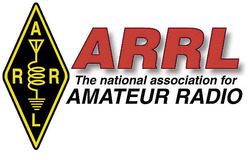
 the Legislative Advocacy Committee, and an advisor to the Amateur Radio Legal Defense and Assistance Committee, among other Board assignments.
the Legislative Advocacy Committee, and an advisor to the Amateur Radio Legal Defense and Assistance Committee, among other Board assignments.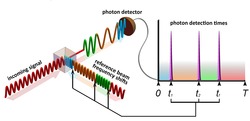
.JPG) amplify the signals repeatedly along the transmission line, at considerable energy cost, keeping them strong enough to detect reliably.
amplify the signals repeatedly along the transmission line, at considerable energy cost, keeping them strong enough to detect reliably..jpg) The latest episode of the On the Air podcast (Episode 10) includes an interview with ARRL Lifelong Learning Manager Kris Bickell, K1BIC, about ARRL's new "Learning Network" webinars.
The latest episode of the On the Air podcast (Episode 10) includes an interview with ARRL Lifelong Learning Manager Kris Bickell, K1BIC, about ARRL's new "Learning Network" webinars..jpg) Preparedness Director Paul Gilbert, KE5ZW, about the future of amateur radio technology in public service, and will also cover a new power source that uses diamonds and nuclear waste.
Preparedness Director Paul Gilbert, KE5ZW, about the future of amateur radio technology in public service, and will also cover a new power source that uses diamonds and nuclear waste.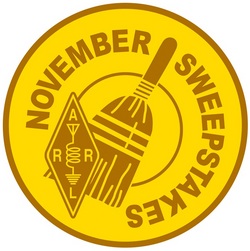
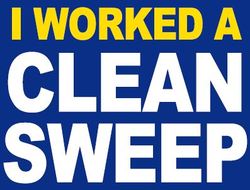
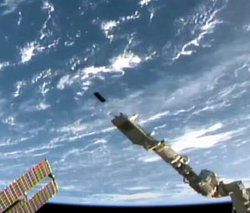 MHz. Developed by the Hawaii Space Flight Laboratory (HSFL) at the University of Hawaii at Manoa (UHM), the satellite's payload includes a VU FM amateur radio repeater during available times and according to the spacecraft's power budget. The Neutron-1 science mission is spelled out in a
MHz. Developed by the Hawaii Space Flight Laboratory (HSFL) at the University of Hawaii at Manoa (UHM), the satellite's payload includes a VU FM amateur radio repeater during available times and according to the spacecraft's power budget. The Neutron-1 science mission is spelled out in a 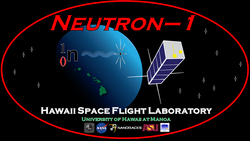 the LEO neutron environment.
the LEO neutron environment.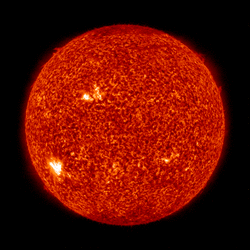 The average daily planetary A index this week was 6.3, down from 12.3 last week. The average daily mid-latitude A index was 4.9, down from 9.9 last week.
The average daily planetary A index this week was 6.3, down from 12.3 last week. The average daily mid-latitude A index was 4.9, down from 9.9 last week.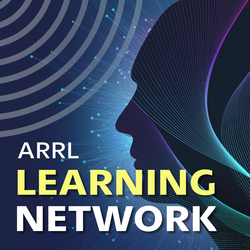 Amateur radio has played a significant role in public service communications for the Boston Marathon for several decades. That role was put to the test in 2013 when two bombs were exploded near the finish line. This presentation will describe the role that ham radio played at the marathon and how that role changed due to the bombing.
Amateur radio has played a significant role in public service communications for the Boston Marathon for several decades. That role was put to the test in 2013 when two bombs were exploded near the finish line. This presentation will describe the role that ham radio played at the marathon and how that role changed due to the bombing. (FT5/W), Scarborough Reef (BS7H), and San Felix Islands (CE0X) rounding out the top five entities.
(FT5/W), Scarborough Reef (BS7H), and San Felix Islands (CE0X) rounding out the top five entities.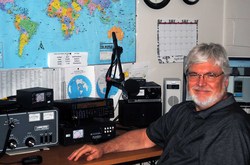 new film,
new film, .JPG)
.jpg) The German town of Bad Bentheim is seeking nominations for the Golden Antenna Award. For 50 years, the town has hosted Deutsch-Niederländische Amateurfunker Tage (
The German town of Bad Bentheim is seeking nominations for the Golden Antenna Award. For 50 years, the town has hosted Deutsch-Niederländische Amateurfunker Tage (.jpg) IEEE Region 1 has selected Ulrich Rohde, N1UL, as the recipient of the 2020 IEEE Region 1 Technological Innovation (Industry or Government) Award. The selection was made by the Region 1 Awards and Recognition Committee and approved by the Region 1 Board of Governors. The award recognizes "pioneering research and leadership in signal processing." The Technological Innovation (Industry or Government) Award cites "significant patents, discovery of new devices, development of applications, or exemplary contributions to industry or government fitting Dr. Rohde's accomplishments in our industry." A partner of Rohde & Schwarz, Rohde has published more than 300 scientific papers and written several books and book chapters. He holds several dozen patents.
IEEE Region 1 has selected Ulrich Rohde, N1UL, as the recipient of the 2020 IEEE Region 1 Technological Innovation (Industry or Government) Award. The selection was made by the Region 1 Awards and Recognition Committee and approved by the Region 1 Board of Governors. The award recognizes "pioneering research and leadership in signal processing." The Technological Innovation (Industry or Government) Award cites "significant patents, discovery of new devices, development of applications, or exemplary contributions to industry or government fitting Dr. Rohde's accomplishments in our industry." A partner of Rohde & Schwarz, Rohde has published more than 300 scientific papers and written several books and book chapters. He holds several dozen patents.







